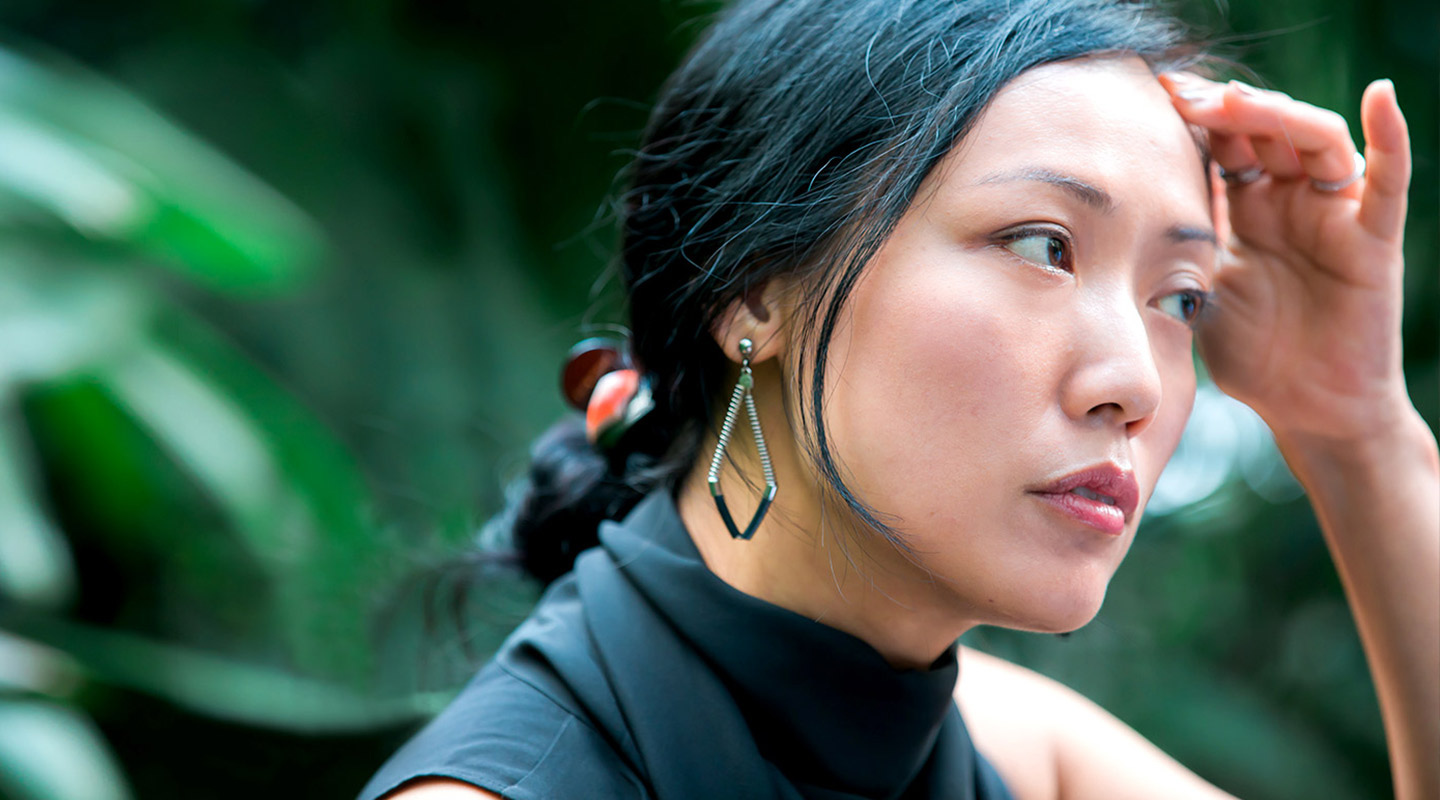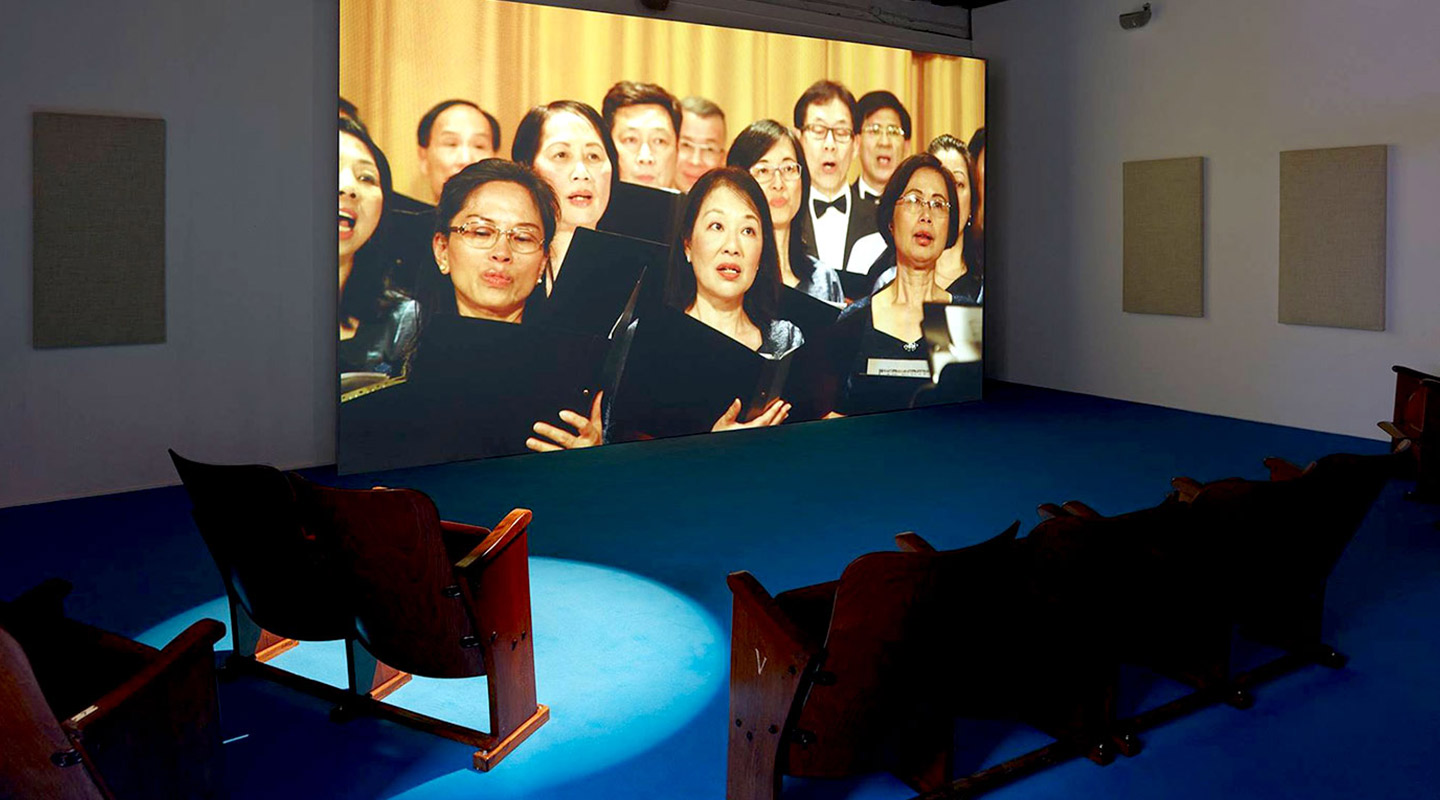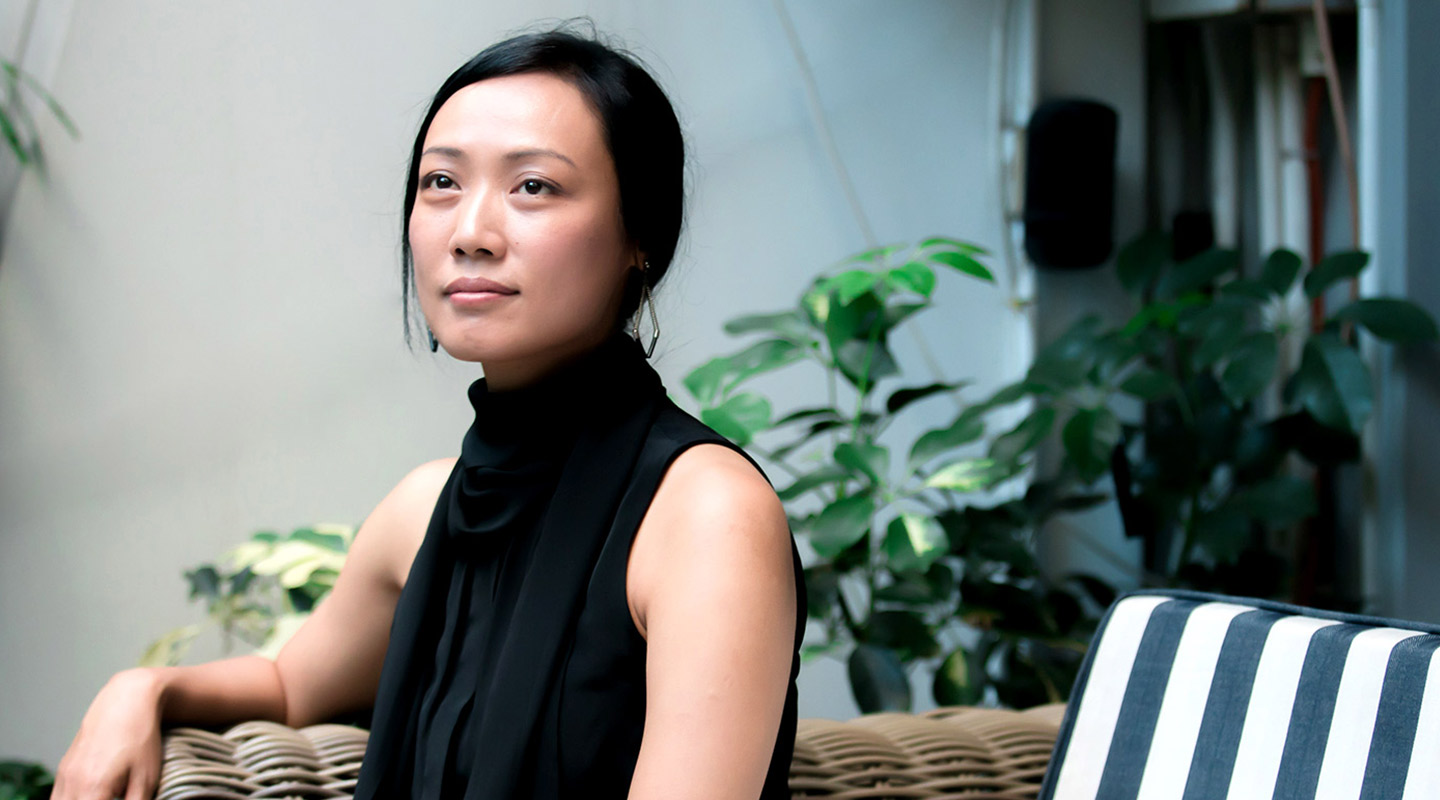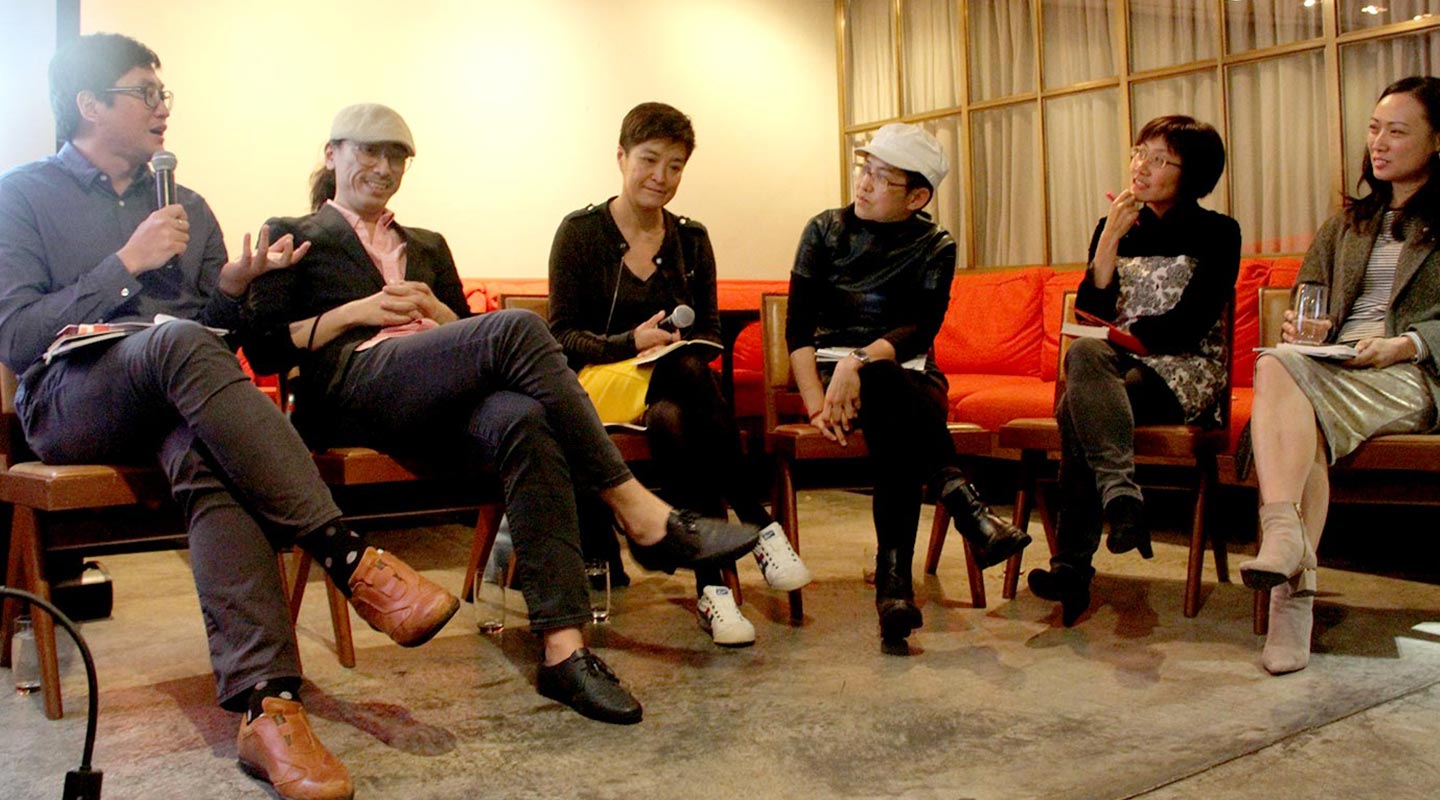Mastering the Art of Curation
Kwok Ying creates space for aesthetic discourse

With participating artists hogging the limelight, it is easy to overlook the importance of curators who coordinate all aspects of an art exhibition behind the scene to create a positive atmosphere for discourse between visitors and the exhibits. At the 57th Venice Biennale, which opened on 13 May this year, Samson Young’s ‘Songs for Disaster Relief’ in the Hong Kong Pavilion drew throngs of visitors. A month before the event commenced, curator Kwok Ying was already there to oversee its preparation.
Besides unboxing and laying out the artworks, Kwok and her team also had to erect partition walls and set up the lighting and sound system to provide an engaging audio-visual experience for visitors at the venue. For the exhibition, Samson conceived a new body of works that consisted of drawings, objects, spatial sound installations and site-specific pieces, inspired by the charity singles like ‘We Are the World’ and ‘Do They Know It’s Christmas?’ of the bygone years.
‘In the 1980s, it was common for the western superstars to record singles for disaster relief, which almost became a music genre in itself. Hong Kong pop stars did the same to raise charity funds. Yet, when ‘Do They Know It’s Christmas?’ was remade in recent years, the unexpected rendition resonated greatly with Samson, prompting him to rethink the significance of charity singles. In the exhibition, he attempts to focus different political viewpoints in this cross-cultural music context to shed light on the pressing social, philosophical and political issues, prompting the visitors to contemplate on the symbolic meaning of the disaster relief songs.’

Kwok has maintained an active presence in the international art scene for more than a decade, which saw her curating several exhibitions in the UK, Poland and New York. During her stint in the UK, she visited the Venice Biennale exhibitions, but this is her first time to be invited by the Hong Kong Arts Development Council and M+ at the West Kowloon Cultural District to join the Hong Kong curatorial team as the first guest curator.
The relationship between curator and artist is a subtle one. It also evolves, along with an exhibition event as it moves through the various phases. At the preparatory stage of a group exhibition, the curator tends to have a larger say. ‘But I enjoy solo exhibition the most because both parties are fully involved in the preparation and more or less on equal terms. At this stage, they could build trust and understanding through communication and interactions.’ Kwok believes that the main goal of a solo exhibition is to evoke the artist’s personality and perspectives. To this end, she would raise issues and questions, but whether or not her suggestions are taken or how they should be executed is up to the artist.
Looking back on her four-year education in CUHK’s Department of Fine Arts, Kwok felt that the ways she was taught to think and raise questions had served her for life. ‘Prof. Lui Chun-kwong was adept at leading his students into intuitive thinking and could engage in in-depth interactions with them in a short time. Prof. Chan Yuk-keung followed a step-by-step approach with the questions he asked and this helped me to cultivate the habit of systematic thinking. All these are critical to planning my career, as I always need to comprehend the event organizers’ requirements and key messages of the art exhibits. Proper inquiry and thinking skills are particularly crucial in this regard.’

After graduating from CUHK, Kwok furthered her studies at the University of the Arts London with the Chevening Scholarship. Subsequently, she became a curator in the Centre for Chinese Contemporary Arts in Manchester, where she planned exhibitions and seminars and oversaw its artist residency programme. Understanding the UK art sector, including its modus operandi and how it actually worked, was the greatest challenge she met. ‘This has nothing to do with language skills, as the logic of discourse is unique to every art scene and organization. What matters most is being able to master the key to communication and understanding mindsets, through which we can learn how to position ourselves.’
A decade ago, Chinese art received scant attention in the UK. But gradually, Kwok learned how to increase its exposure, helping it to establish itself locally. ‘British art holds considerable clout in the contemporary art circles. Tracking what the community was discussing about and the ideas underlying their concerns helped me to facilitate collaboration and exchanges of the Centre with similar organizations across the UK and Asia.’ Based on the extensive curatorial experiences gained abroad, Kwok eventually became an independent curator.
Upon returning to Hong Kong, Kwok found arts information hard to come by and the local artists could look for little support. In 2014, she founded the Art Appraisal Club, with university professors, artists, curators and museum researchers among its members. They meet monthly to exchange views on artistic events. The notes taken and the ‘monthly exhibition checklists’ will be uploaded online. Sometimes, they provide guided exhibition tours and take visitors to artist workshops, as they look forward to integrating arts into public life.

Kwok believes every exhibit is the artist’s labour of love and worthy of serious discussion. ‘The end of an exhibition doesn’t mean the end for its exhibits. We need to discuss and publish criticism to elicit a deeper understanding of the exhibits. One reason why Hong Kong art seldom gets international attention is due to the lack of art criticism and that is why we started publishing the half-yearly bilingual Art Review Hong Kong last year to explore issues and get readers to reflect on the relationship between artworks and society, while enabling them to delve into the creative process and mindset of artists.’
Despite the dearth and decline of local art criticism especially in print media, Kwok has chosen to tread a less travelled path, in the hope of stimulating discussion and the flowering of art in what seems to be a cultural wasteland.
Reported by Jenny Lau, ISO
This article was originally published on CUHK Homepage in Oct 2017.

